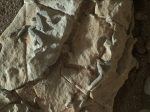Gunung Kawi is the largest and maybe also the most impressive of the old monuments on Bali. Like Goa Gajah this site is around 1.000 years old, probably built at the end of the 11th century.

Gunung Kawi was first discovered by Europeans in 1920, even if the local population had knowledge of it a long time before that.

The monument is located just south of Tampaksiring city, about 40 km north of Denpasar. It was in this area Hinduism first got a foothold on Bali. The site consist of a total of 10 temples or shrines carved out of the mountain, each of these stand inside a 7 meter high niche for protection against the weather. The shrines are only facades, there are no inner chambers. The 10 monuments are spread on three sites, 5 is located east of the river, 4 on the west side and one which is built on a separate site about one km further south in the valley.

There are split opinions of what Gunung Kawi really means, one explanation is “carvings in mountain”, another “mountain of poetry”. It’s also not clear who built the monument and why. Like Goa Gajah and all other ancient sites between the Pakrisan and Petanu rivers this one is, according to old tradition, carved out of the mountain in one night by the giant Kebo Iwo.

There is no doubt that each temple is a monument over a dead royal figure, mainly because they have the same shape as burial towers found all over Central and East Java. Exactly which royalties these are made for is disputed, the most popular theory is that the five temples east of the river is built for king Udayana, his Javanese queen Guna Pria Dharma Patni, his concubine, his oldest son Airlangga who ruled East Java, and his youngest son Anak Wungsu. Anak Wungsu ruled on Bali from 1050 to 1077. The four temples on the west side of the river should then have been built for the chief concubines of Anak Wungsu. The tenth, about one km away, is probably built to honor Rakryan, Anak Wungsu’s prime minister.

. A stairway leads up to the monuments. (Photo Bjorn Grotting)
Another theory is that the entire complex has been built only for Anak Wungsu, his wives and favorite concubines, who probably killed themselves to follow their ruler into eternity. This particular architecture do probably originate on Java, it’s also said that it can resemble Indian temples. The unique about these monuments compared to other similar sites is that they do not stand freely, but is a part of the mountain.

To the right of the main entrance is a Buddhist monastery, the monks were probably caretakers of Gunung Kawi. The complex is open daily, and the area is nice and tidy, surrounded by lovely rice paddies and trees. From the souvenir stalls on the top you walk down a long, steep stairway with 315 steps and through a gate carved out of the mountain. Don’t miss this place, it is absolutely worth a visit! There is another Gunung Kawi in the Sebatu village 5 km further north, but this is a bathing place.


